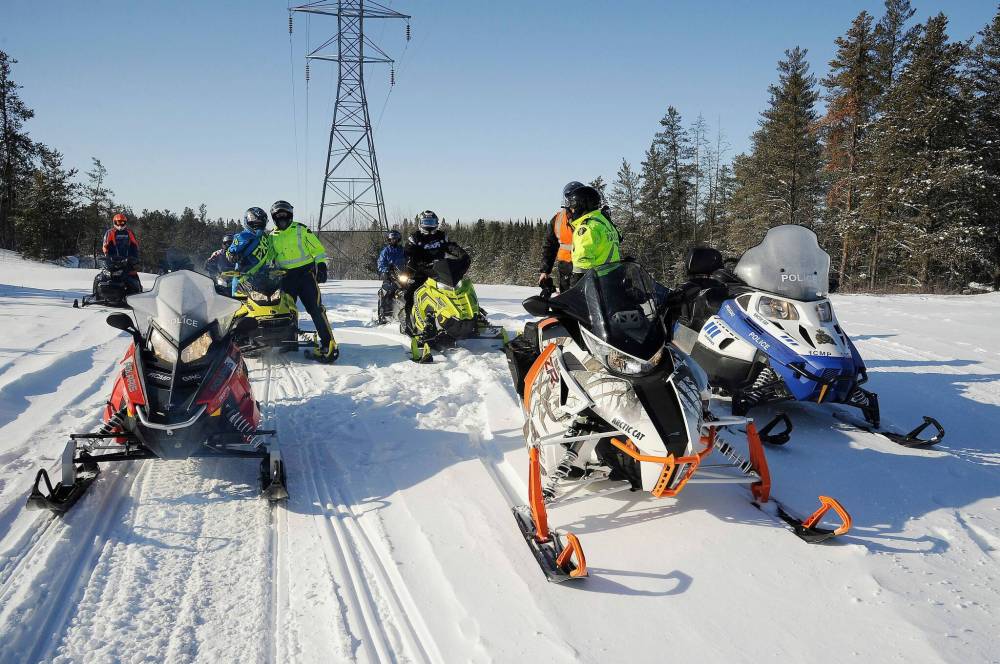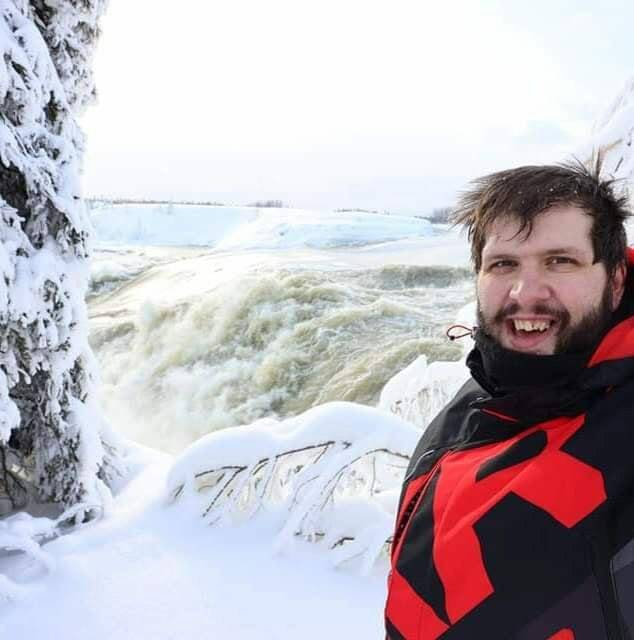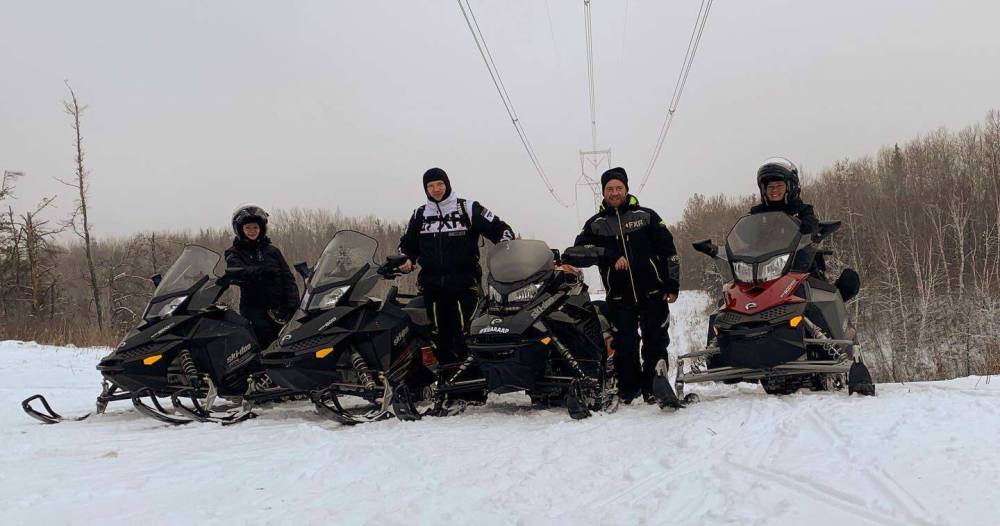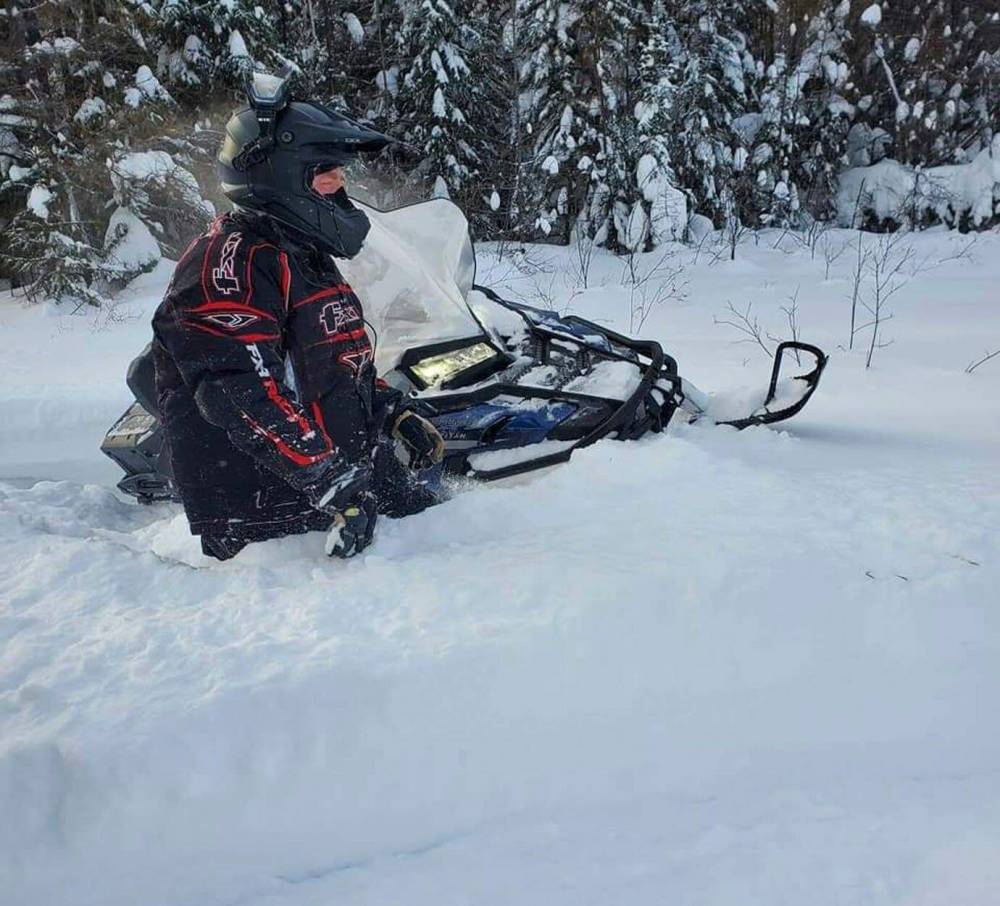Busy year for snowmobiling, busy year for danger
High speed, intoxication tied to five serious crashes; so far in 2022, four snowmobilers have died
Advertisement
Read this article for free:
or
Already have an account? Log in here »
To continue reading, please subscribe:
Monthly Digital Subscription
$1 per week for 24 weeks*
- Enjoy unlimited reading on winnipegfreepress.com
- Read the E-Edition, our digital replica newspaper
- Access News Break, our award-winning app
- Play interactive puzzles
*Billed as $4.00 plus GST every four weeks. After 24 weeks, price increases to the regular rate of $19.00 plus GST every four weeks. Offer available to new and qualified returning subscribers only. Cancel any time.
Monthly Digital Subscription
$4.75/week*
- Enjoy unlimited reading on winnipegfreepress.com
- Read the E-Edition, our digital replica newspaper
- Access News Break, our award-winning app
- Play interactive puzzles
*Billed as $19 plus GST every four weeks. Cancel any time.
To continue reading, please subscribe:
Add Free Press access to your Brandon Sun subscription for only an additional
$1 for the first 4 weeks*
*Your next subscription payment will increase by $1.00 and you will be charged $16.99 plus GST for four weeks. After four weeks, your payment will increase to $23.99 plus GST every four weeks.
Read unlimited articles for free today:
or
Already have an account? Log in here »
Hey there, time traveller!
This article was published 28/02/2022 (1326 days ago), so information in it may no longer be current.
Snowmobiling is a lifestyle, for some. They breath the sharp, cold air, and they drink in the jack pines and the sunlight pouring through.
However, the first two months of the year have also been fraught with reminders of how dangerous driving these fast-driving machines can be. Four people have died in snowmobiling collisions. Three deaths occurred on groomed trails, including two in the Lac du Bonnet area.
The fatality numbers already equal last year’s numbers, according to RCMP spokesperson Tara Seel. Another 11 accidents in 2021 resulted in “serious injury.”

Since 2018, the annual number of deaths associated with snowmobiling has ranged from three to nine people.
“I used to be an avid snowmobiler and then I joined the RCMP,” said Seel, who admitted she gave up riding after seeing how many snowmobilers were killed or injured.
“I haven’t got back on a snowmobile since. But (recently,) I spoke to another officer and he said, ‘I don’t really understand that decision.’ He said, ‘With a motorcycle, the decisions are out of your hands, but with a snowmobile the decision is in your hands. If you’re driving responsibly it’s not actually dangerous.’”
But some on the trails aren’t driving responsibly, said RCMP Cpl. Chad Yerek, who heads a snowmobile patrol in Lac du Bonnet.
In five serious crashes last year, either excessive speed or impairment (or both) were found to be factors.
“They’re driving really fast, not only in the open there, but also in the trails, where the speed limits are 60 kilometres an hour. So, a lot of people aren’t doing that,” he said.
He said inexperience is another issue.
“We find a lot of people don’t have a lot of experience driving snowmobiles… it doesn’t take much to hit a rut or lose control, and you’re hitting a tree or running into somebody else,” he said.
Many in the province’s snowmobiling community share the view that snowmobiling is less dangerous than riding a motorcycle.

It can be hard to compare collision statistics between motorcycles and snowmobiles, said Manitoba Public Insurance spokesperson Brian Smiley. Insurance coverage for snowmobiles varies more widely than for motorcycles, and as a snowmobiler himself, he said people are unlikely to report any collisions for which they are not covered.
“So, a snowmobiler may be going down a trail but they might not necessarily report that collision if they don’t have that optional coverage,” he said. “And if you have a snowmobiler that’s injured, they may drive off and go to the hospital… So, the (comparisons of snowmobile and motorcycle injuries) are going to be a real stretch.”
Many avid snowmobilers, such as Dennis Foley, president of the Thompson Trail Breakers snowmobiling club, said the pastime offers sightseeing and a sense of community that enriches lives.
“We live in such a beautiful spot that from where I work, it’s a 10-minute ride and I’m already at the top of this place called Manasan Falls,” Foley said.
Foley and his fellow club members are responsible for grooming huge stretches of trails that run as far as Gillam and Snow Lake, both about 250 kilometres from Thompson in opposite directions.
Volunteers from clubs around the province drive huge “groomers” with dozers attached to the front and a rake of sorts on the back, which smooths out the trails. Others are in charge of putting up signage.
“The signing of the trails, my goodness, I can’t tell you how tedious that is. How time consuming,” Foley said.
One trail takes seven hours to groom or sign; another takes two days, Foley said.
While trails are often used for recreational riding, especially in southern Manitoba, they can also serve as important transportation networks.

Foley works for a snowmobile dealer and said the majority of his customers are from surrounding communities. Many are career trappers, Foley said, who rely on snowmobiles and trail networks for their livelihoods. The machines also play an integral part in caribou and other hunts, he said.
For others, the stakes are not so high. But Bryan Funk, for one, said it helps him to connect with family.
“It’s time outdoors with my brother and sister-in-law, with friends, with the wife and kids,” said the Lac du Bonnet snowmobiler.
David Kryschuk, who installs signage on trails near Beausejour as a member of the Brokenhead Trail Blazers, said the activity helps provide an insight into Manitoba’s natural beauty.
Kryschuk’s occasional riding partner Jeff Sobetski concurs.
“We were up north, and you stop in the middle of a moonlight night, and there’s not a cloud in the sky. It’s just calm and you look up to the trees and see all the stars. You don’t have any of the glow of city lights around. It’s just amazing,” said Sobetski.
It the benefits, rather than danger, that snowmobilers prefer to focus on. Most did acknowledge snowmobiling could be perilous, but said as long as they kept their speed down, drove sober and wore protective gear, the risks were limited.
Whatever their reasons for riding, the number of snowmobilers in Manitoba has grown. Snowmobilers of Manitoba (known as Snoman) executive director Yvonne Rideout said there are about 22,000 Snoman pass holders in the province, but about 37,000 snowmobilers in the province. That’s up 1,900 passes from last year, she said, adding not everyone requires a pass — including trappers on a trap line, commercial fishers, and people driving on their own property.
Rideout said the organization tries to educate on safety.

“We try to keep our safety message consistent: if you’re on a two-way trail, ride to the right and ride to your ability. We recommend 60 km per hour on straight trails or 30 km per hour on curves. We ask people to pay attention to the signs. And, when there has been a blizzard, be careful out there because the trails are going to be blown in before we get there,” she said.
One way to keep speed down is to enjoy the ride, she said.
“We always say ride within your ability. It is a fast machine,” she said. “And enjoy the scenery. Don’t just rush past it.”
Snoman also offers online safety courses, which Rideout encourages all riders to enrol in, regardless of experience.
fpcity@freepress.mb.ca

